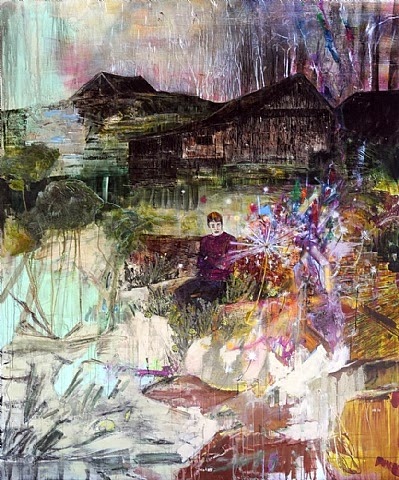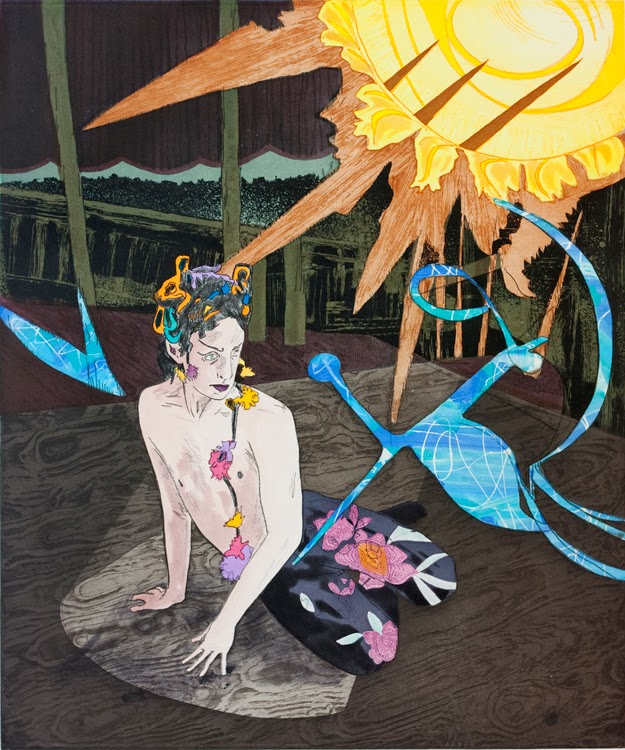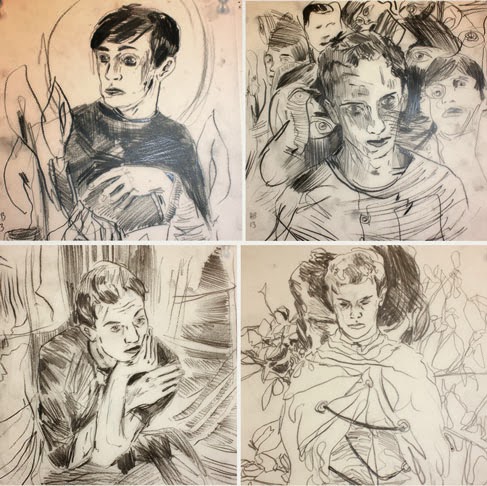Hernan Bas
When Hernan contacted Paulson Bott Press to purchase a print by Tauba Auerbach, I took the opportunity to invite him to make etchings. For many years I had been enthralled by Hernan’s paintings and extremely curious about the man responsible for many of the “Renaissance in Detroit” stories I had read.
Hernan grew up in Florida and became widely celebrated as a Miami artist. His more recent move to Detroit was motivated by his need for escape and discovery. These same desires are evoked in his paintings. Detroit has become a lonely, abandoned city, now haunted by the ghosts of America’s failed promises, the perfect muse for Bas and his depictions of boyish exploration, supernatural landscapes, death, and rebirth.

Hernan can push paint. The skill with which he draws and paints is astounding. His bold palette and confident mark-making is fast and detailed.
He pushes boundaries as well. He breaks through to the other side, chases pleasures here, and digs treasures there. His embrace of sexuality and a queer perspective is bold and unapologetic.

Hernan and I came of age in the same decade, and I connect with his work in the same way that I connect with the post-punk, alt rock mood of the nineties. My dream dates were once Layne Staley and Kurt Cobain, and there lived in me a deep longing for a life on the fringe, a feeling of alienation, a rejection of some idea I had of the mainstream. It was all “Mellon Collie and the Infinite Sadness.”

It is no surprise that Hernan has been influenced by the writings of Joris Karl-Huysmans, who first defined the Decadent Art Movement. Karl-Huysmans’ book Against Natureillustrated disgust with modern life and deep pessimism. As art historian Otto Urban put it in an interview in F Newsmagazine, “there was much that that decadence introduced for the first time, above all themes that had been taboo (sexuality, Satanism and Anarchism).” In Urban’s words, “The portrayal of the horror and madness of the modern world became a key theme of Decadence. Decadence no longer had utopian visions of change, but only a grimace of ridicule and a longing for isolation.”
Yet Hernan’s paintings have a redemptive power to remind us of our utopian dreams. Hernan takes this loneliness and spins it into gold. He is the contemporary artist whose self-imposed solitude inspired the alchemists of old. After long hours in our studio, Hernan returned to his hotel and continued to work. He’d arrive back the next morning with a fresh group of drawings to inspire his prints, playfully experimenting with every technique intaglio has to offer. The resulting body of work reflects an ongoing transformation between nocturnal longings and the glories of a new day.